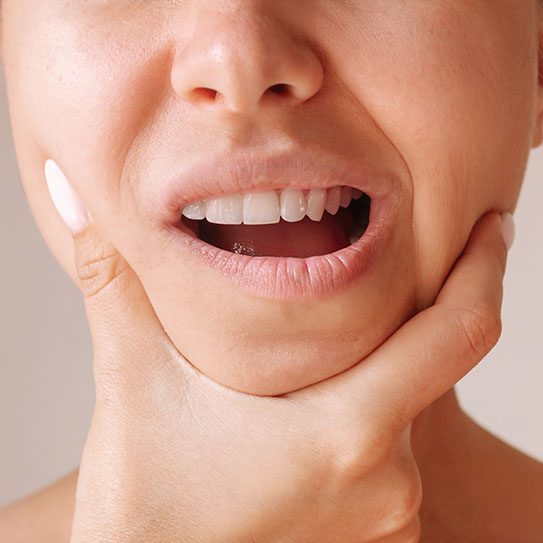
Causes, Symptoms, and Treatment for TMJ Pain
Temporomandibular joint disorder, commonly known as TMJ, affects millions of people worldwide and can significantly impact daily life through persistent jaw pain and dysfunction. At Nick Romanides DMD, our experienced team understands the complex nature of TMJ pain and offers comprehensive treatment solutions for patients throughout North Bergen and the surrounding areas. Whether you’re experiencing mild discomfort or severe symptoms, consulting with an experienced orthodontist West New York residents trust can provide the relief and answers you’ve been seeking.
Understanding TMJ and Its Causes
The temporomandibular joint connects your jawbone to your skull and acts like a sliding hinge, allowing you to talk, chew, and yawn. When this joint becomes inflamed or damaged, it can result in TMJ pain that radiates throughout the jaw, face, and even the neck and shoulders.
Several factors can contribute to the development of TMJ disorders. One of the most common causes is teeth grinding or clenching, particularly during sleep, which places excessive stress on the jaw joint. Misaligned teeth or an improper bite can also create uneven pressure on the temporomandibular joint, leading to inflammation and pain over time.
Arthritis can affect the TMJ just like any other joint in the body, causing cartilage breakdown and resulting in painful movement. Jaw injuries from accidents, sports, or even dental procedures can damage the joint or surrounding muscles. Additionally, stress and anxiety often manifest as increased muscle tension in the jaw area, contributing to TMJ pain development.
Poor posture, particularly forward head posture common in our digital age, can alter the alignment of the jaw and contribute to TMJ disorders. Some individuals may also have structural abnormalities in the jaw joint that predispose them to developing TMJ pain.
Recognizing TMJ Symptoms
TMJ pain manifests differently for each individual, but there are several common symptoms to watch for. The most obvious sign is pain or tenderness in the jaw joint area, which may worsen when chewing, speaking, or opening the mouth wide.
Many patients experience clicking, popping, or grating sounds when moving their jaw, which may or may not be accompanied by pain. Some individuals find their jaw becomes locked in either an open or closed position, making normal mouth movement temporarily impossible.
TMJ pain often extends beyond the immediate jaw area. Patients frequently report headaches, particularly in the temple region, as well as earaches or a feeling of fullness in the ears. Facial pain, neck pain, and even shoulder discomfort can all stem from TMJ disorders.
Changes in bite alignment may become noticeable, with teeth not fitting together properly when closing the mouth. Some patients also experience difficulty chewing or a tired feeling in the facial muscles after eating or talking for extended periods.
Comprehensive Treatment Approaches
At Nick Romanides DMD, we take a multi-faceted approach to treating TMJ pain, beginning with a thorough evaluation to determine the underlying cause of your symptoms. Our treatment plans are customized to address each patient’s specific needs and may include several therapeutic approaches.
- Orthodontic therapy plays a crucial role in many TMJ treatment plans. When misaligned teeth or bite issues contribute to TMJ pain, orthodontic correction can help redistribute forces more evenly across the jaw joint. Dr. Nick Romanides and Dr. Ryan Trulby utilize advanced orthodontic techniques, including traditional braces and Invisalign, to gradually move teeth into proper alignment, reducing stress on the temporomandibular joint.
- Occlusal splints are custom-made oral appliances designed to protect the teeth and jaw joint from the damaging effects of grinding and clenching. These devices, worn primarily during sleep, help maintain proper jaw positioning and reduce muscle tension that contributes to TMJ pain. Our practice creates personalized splints that fit comfortably and effectively address each patient’s specific needs.
- Bite adjustment procedures can help eliminate premature contacts between teeth that force the jaw into unnatural positions. By carefully reshaping specific tooth surfaces, we can create a more harmonious bite that reduces strain on the TMJ.
Beyond these primary treatments, we often recommend lifestyle modifications and stress management techniques. Simple changes such as eating softer foods, avoiding excessive jaw movements, and practicing relaxation techniques can significantly reduce TMJ pain. We may suggest physical therapy exercises to strengthen jaw muscles and improve joint mobility.
For patients seeking an orthodontist West New York area patients rely on who understands the complexity of TMJ disorders, our team provides education on proper jaw positioning and habits that can prevent symptom recurrence.
When to Seek Professional Care
While some TMJ pain may resolve on its own, persistent symptoms warrant professional evaluation. Early intervention often leads to more effective treatment outcomes and can prevent the condition from worsening.
For complex cases that require specialized intervention beyond orthodontic care, our practice maintains relationships with oral surgeons and other specialists to ensure our patients receive comprehensive treatment. At Nick Romanides DMD, we’re committed to helping you achieve lasting relief from TMJ pain through personalized, evidence-based treatment approaches tailored to your unique situation.

